 |
 |
 |
| |
PET IMAGING OF SYNAPTIC DENSITY IN HIV: PRELIMINARY FINDINGS FROM A PILOT STUDY
|
| |
| |
CROI 2020 March 8-11
Reported by Jules Levin
http://www.croiwebcasts.org/console/player/44577?mediaType=slideVideo&
Oral Session:
NOVEL ASSESSMENTS OF CENTRAL NERVOUS
SYSTEM PATHOGENESIS 1 of several talks
Julian Weiss1, Rachela Calvi1, Mika Naganawa1, Takuya Toyonaga1, Shelli Farhadian1, Michelle Chintanaphol1, Jennifer Chiarella1, Ming-Qiang Zheng1, Jim Ropchan1, Yiyun Huang1, Richard Carson1, Serena S. Spudich1
1Yale University, New Haven, CT, USA
Background: Synaptic injury, which is potentially reversible, is a pathological hallmark of HIV associated neurocognitive disorder (HAND) in people living with HIV (PLWH) on antiretroviral therapy (ART), but it has only been assessed in post-mortem studies in humans. Here we report initial results from a pilot positron emission tomography (PET) study employing the novel ligand 11C-UCB-J for synaptic vesicle protein 2A (SV2A) to measure synaptic density in virologically suppressed PLWH and healthy controls (HC).
Methods: Six male PLWH and seven age-matched HC underwent 3T magnetic resonance imaging (MRI) and high-resolution PET scanning with 11C-UCB-J combined with arterial blood sampling. Distribution volume (VT, mL/cm3) and binding potential (BPND), a measure of SV2A binding, were assessed in 28 regions of interest (ROIs) using the centrum semiovale as a reference region. Partial volume correction using Freesurfer was performed to correct for atrophy. Differences in VT and BPND between the groups were analyzed using a Student’s t-test.
Results: There were no significant differences in age (HC: mean [SD], 59 [8]; PLWH: 61 [5]; p=0.53), race, or body mass index between the groups. PLWH were well-suppressed on ART (mean [SD], CD4 T cells 703 [194] cells/mL, duration of ART 21 [8] years), and all participants had CSF and plasma HIV RNA <20 copies/mL. VT values of the reference region were similar in both groups (HC: 4.08 [0.70]; PLWH: 4.37 [1.01]; p=0.57). PLWH had significantly lower SV2A specific binding (BPND) in eight cortical ROIs compared with HC (p<0.05), illustrated by representative cases (Figure 1). Four of these ROIs, including the precuneus (HC: 6.13 [0.87]; PLWH: 4.89 [0.85]; p=0.03) and superior parietal lobule (HC: 6.04 [0.65]; PLWH: 4.71 [1.07]; p=0.03), are within the parietal lobe, which as a whole trended toward significance (HC: 6.19 [0.88]; PLWH: 5.07 [1.04]; p=0.07). There were no significant differences in VT, though lower values in PLWH were noted in the eight cortical ROIs with significantly decreased BPND.
Conclusion: This preliminary analysis of an ongoing pilot study demonstrates the potential utility of SV2A PET imaging in identifying regions of reduced synaptic density in suppressed PLWH. A larger sample is needed to draw conclusions on which ROIs are most affected, and to explore associations between synaptic density and lab and clinical parameters including neuropsychological performance. SV2A imaging may be a promising outcome measure for interventional trials of HAND.
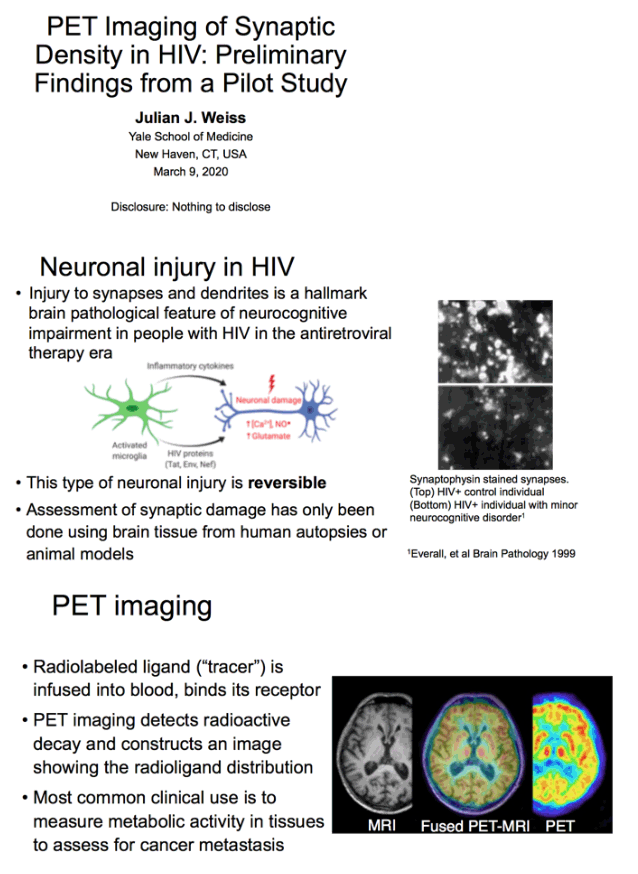
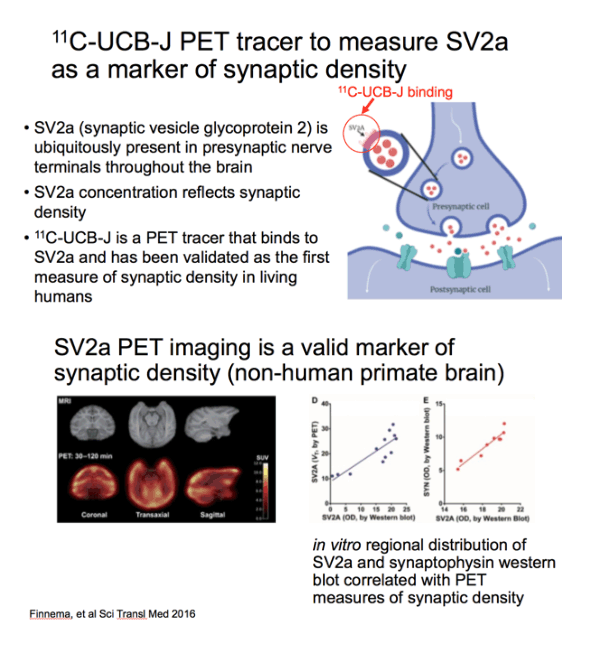
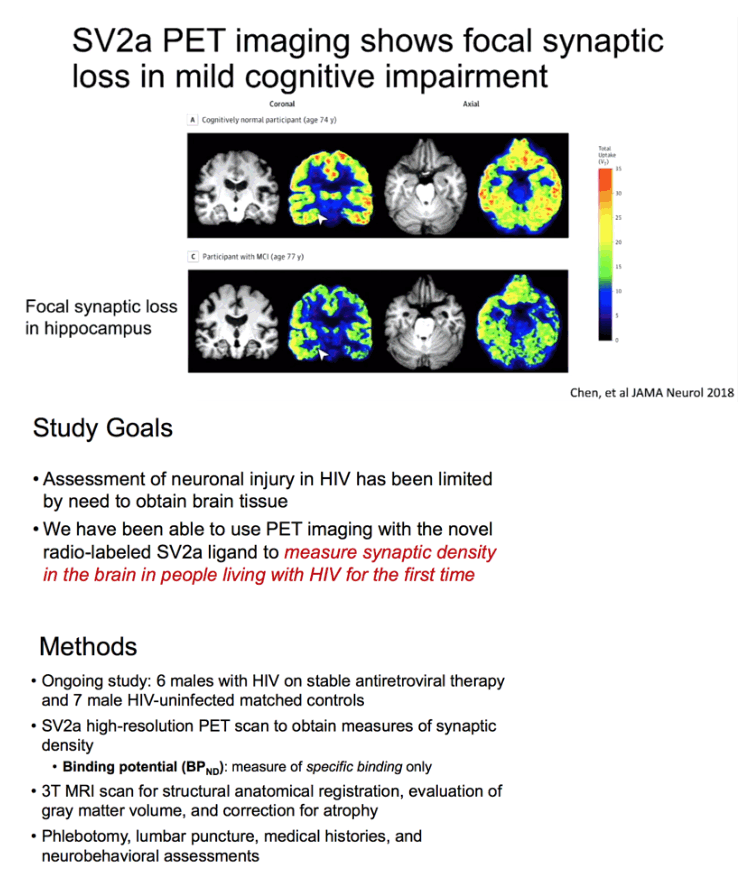

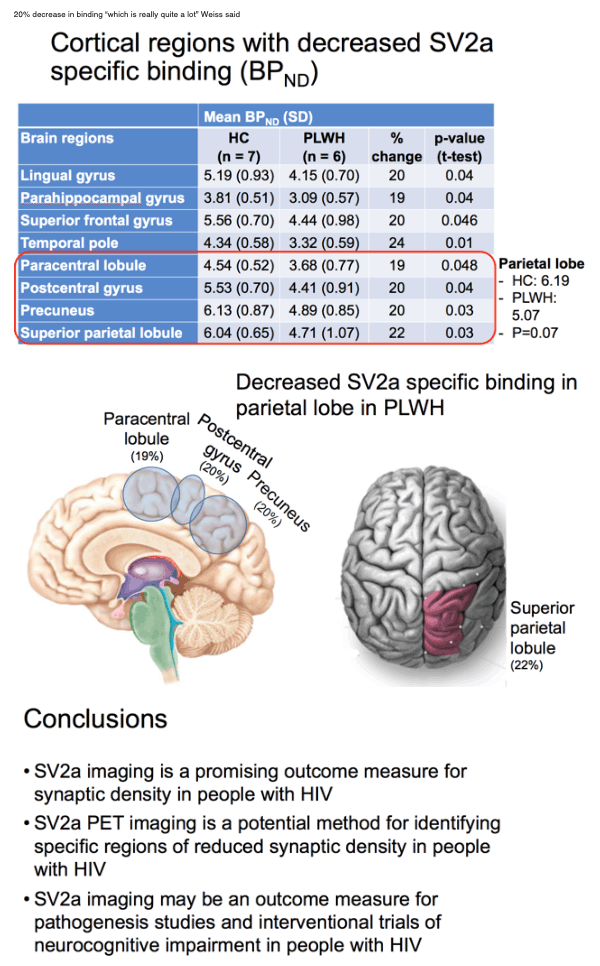
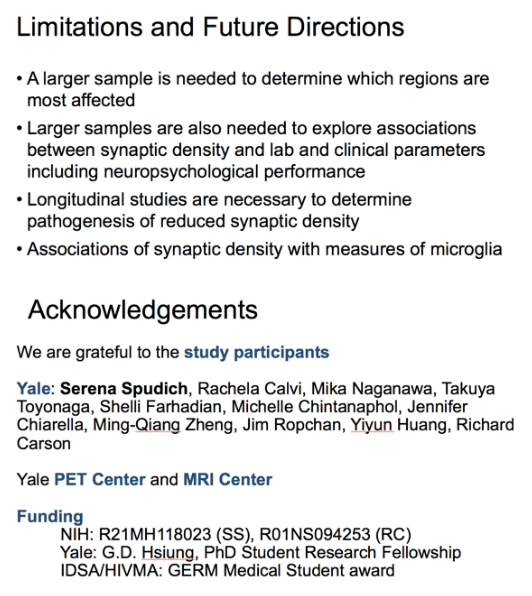
|
| |
|
 |
 |
|
|